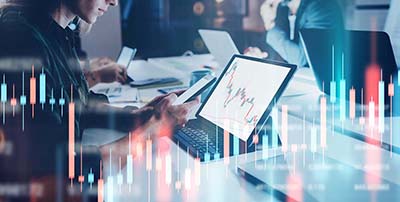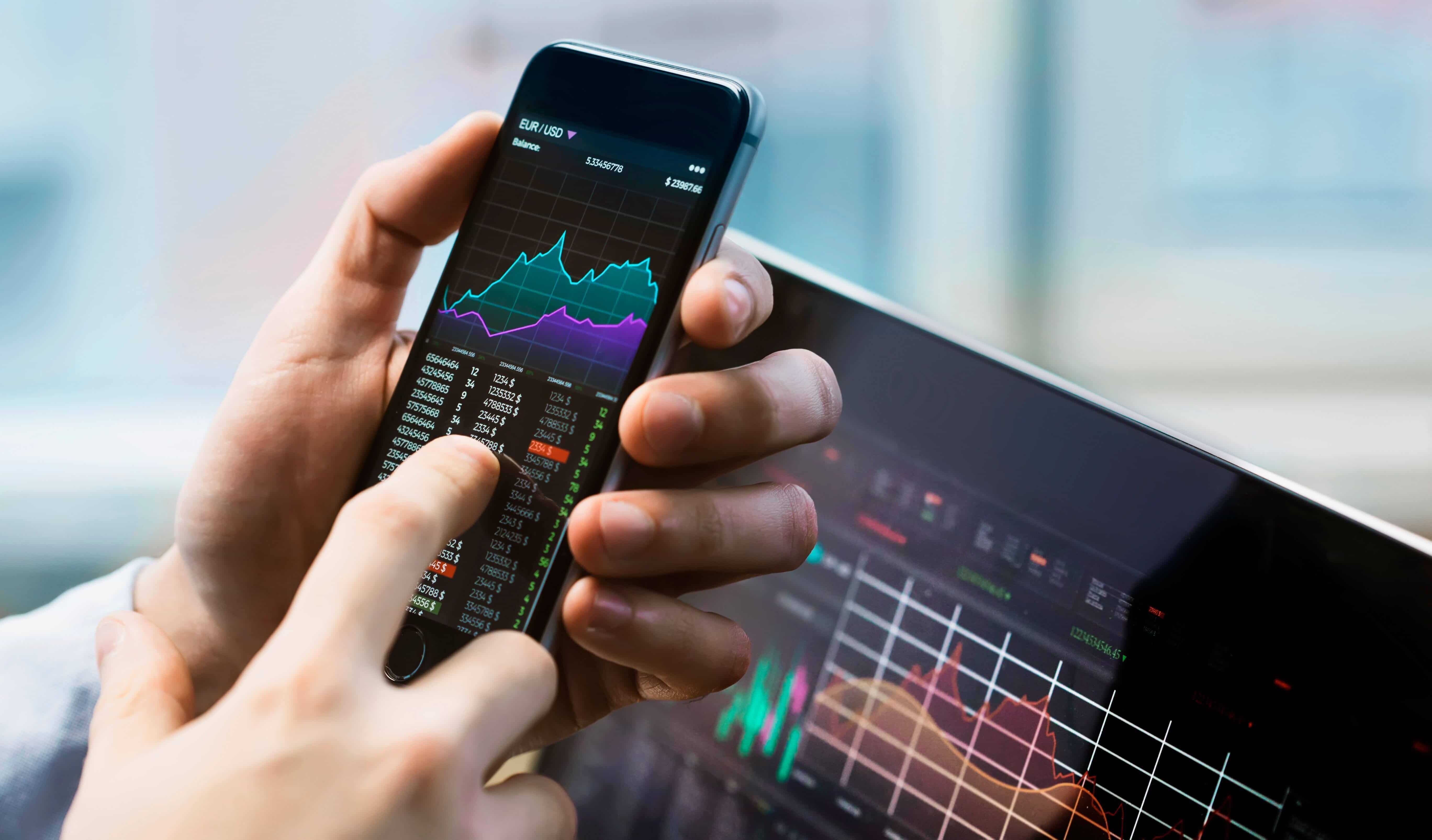The Dow Jones Industrial Average
Dow Jones & Co. was founded in 1882 by Charles Dow, Edward Jones, and Charles Bergstresser. Originally, the first industrial averages did not include industrial stocks but only transportation companies, which evolved into the “Transportation Average.”
It was not until 1896 that the Dow divided transportation and industrials into two different averages, creating the Dow Jones Industrial Average (DJIA).
Charles Dow’s vision was to create a benchmark for investors to understand the general conditions of the market. The original 12 companies of the DJIA were in the railroad, cotton, gas, sugar, tobacco, and oil industries. The performance of these companies generally depicted the overall state of the national economy. This tradition has persisted throughout the years and economists still hold the firm belief that a strong Dow represents a strong economy.
What is the Dow?
The DJIA is a stock market index of a weighted average of 30 publicly-owned companies. These companies are featured on the New York Stock Exchange and the NASDAQ. The 30 companies in the DJIA are known as “blue chip” companies, which are well-established and nationally recognized companies known to have a record of stable growth. A company that loses a large percentage of its market capitalization due to financial distress might be removed from the Dow – these decisions are taken by a committee of representatives from S&P and from the Wall Street Journal, which is owned by Dow Jones. Due to the fact that these companies represent some of the top stocks in the marketplace, their combined stock price is believed to represent an accurate assessment of the overall health of the market as well as its general tendencies.
The Dow Jones includes the following companies. Note that this is the case at the time of writing, but things may change as companies gain and lose importance over time.
Company (Symbol; Year added)
1.3M (MMM; 1976)
2.American Express (AXP; 1982)
3.Amgen (AMGN; 2020)
4.Apple Inc. (AAPL; 2015)
5.Boeing(BA; 1987)
6.Caterpillar (CAT; 1991)
7.Chevron (CVX; 2008)
8.Cisco Systems (CSCO; 2009)
9.The Coca-Cola Company (KO; 1987)
10.Dow Inc. (DOW; 2019)
11.Goldman Sachs(GS; 2013)
12.The Home Depot (HD; 1999)
13.Honeywell (HON; 2020)
14.IBM (IBM; 1979)
15.Intel (INTC; 1999)
16.Johnson & Johnson (JNJ; 1997)
17.JPMorgan Chase (JPM; 1991)
18.McDonald's (MCD; 1985)
19.Merck & Co. (MRK; 1979)
20.Microsoft (MSFT; 1999)
21.NIKE (NKE; 2013)
22.Proctor & Gamble (PG; 1932)
23.Salesforce (CRM; 2020)
24.The Travelers Companies (TRV; 2009)
25.UnitedHealth Group (UNH; 2012)
26.Verizon(VZ; 2004)
27.Visa (V; 2013)
28.Walmart (WMT; 1997)
29.Walgreens Boots Alliance (WBA; 2018)
30.The Walt Disney Company (DIS; 1991)
What is the Dow used for?
The DJIA, along with other indexes, is often used as a benchmark or frame of reference against which to measure investment successes or failures. For example, if you made an investment and your return is lower than the Dow, it means that you would have made a better deal buying the index instead and that the market is beating you. On the contrary, if you manage to get a return on investment above the Dow’s, you just beat the market average!
The Dow can also serve as an automatic portfolio through the several mutual funds and exchange-traded funds that track its performance instead of engaging in active trading or stockpiling.
It also serves as a technical indicator whereby historical performance can be used for future movement predictions. It is impossible to know what is happening in the market when looking at individual stocks. However, indexes like the Dow Jones give you an overview of the overall market, to see the overall picture at a glance. Finally, the DJIA is often used as an indicator of systemic risk, or random daily price fluctuations in everyday life, as it exhibits these fluctuations on a daily basis. For example, a 10% loss in a day would be very bad and would require investigation from investors.
Critiques of the Dow
Nevertheless, due to the small number of companies represented in this index, critics have stated that it does not significantly represent the state of the US economy and that the S&P 500 is a better indicator due to its representation of a more diverse selection of companies. Additionally, the DJIA’s method of factoring a company’s size – only looking at the price of a stock – has been critiqued as limiting. Market capitalization is argued to be a better method of measuring the value of a company, as it multiplies the number of shares outstanding to its stock price. Furthermore, the Dow is said to overly represent industrial and consumer cyclical companies that provide non-essential goods and services in comparison with the market as a whole. The S&P 500 usually performs better than the Dow in the early stages of bull markets and when tech stocks perform better than the overall market. The S&P 500 unlike the Dow is a tech-heavy index and has a lower concentration of industrial stocks. For this reason, the S&P 500 outperformed the Dow this year.
Since the Dow is “Price Weighted” as opposed to “Market Cap Weighted,” stocks with a higher share price are given greater weight. A movement in a higher-priced stock will have a greater impact on the final average. Between March 1 and June 3 of 2019 for example, the DOW dropped 700 basis points, and this was all due to the decline in Boeing’s stock. If Amazon were included in the Dow, it would account for half the movement of the entire index. Out of the top major companies in the US, only Apple and Microsoft are listed on the Dow. Berkshire Hathaway does not make the cut either due to the fact that it pays no dividends. While the Dow has no official dividend rule, all 30 components make regular pay-outs.
To illustrate the difference between price-weighted and market cap-weighted, looking at an example between a large divergence in the Dow and the S&P 500 beginning in November 2017 is useful. The Dow surged ahead of the S&P 500 quite substantially which is rather unusual as the two indexes tend to move within a percentage point or two of each other. This divergence depended only on 2 stocks, Apple and Boeing – and of course on the way the indexes are constructed. Both stocks were performing very well, Boeing trading at $235 a stock and Apple at about $157. However, Boeing had a barely noticeable impact on the S&P 500 and a huge effect on the Dow. In 2017, Boeing accounted for one-quarter of the Dow’s entire increase, almost double Apple’s contribution even though Apple is the most valuable company in the entire stock market. In the S&P 500, stocks with a bigger market cap have a proportionately bigger impact on the index. Professionals tend to use it much more widely than the Dow due to its market-weighted index and perceived better representation of the state of the market.
Why invest in the Dow?
While some have called the Dow obsolete, there are still many reasons to invest in the index. Despite its peculiarities, the Dow’s performance has matched that of the S&P 500 over the past 10 years, even though there are notable year-to-year differences. The biggest difference between the two is risk or volatility. Over the past ten years, the Dow has expressed lower volatility than the S&P 500. The Dow also provides diversification through the multinational operations of the companies represented in the index. Investors can therefore expose themselves to international markets which can serve as a useful hedge against potential negative impacts of a weak US economy.
How to Invest in the Dow
There are differences between trading and investing in the Dow. When trading, one uses financial derivatives to speculate on the movement of the price of the index. When one invests, one is taking direct ownership of an asset such as an ETF or shares of individual companies. When investing, the objective is to wait until for the shares to rise in value to make a profit. One could also benefit from dividends depending on the investment choice. There are several ways one can invest in the DJIA. Although one can technically purchase shares in the 30 companies of the DJIA, this can be a costly way to invest in the Dow as the stock prices are rather high and one would need to buy and sell companies as they are dropped and added. There are cheaper and easier ways to invest in the Dow through mutual and exchange-traded funds which can replicate the performance of the index holding the same proportions of each stock. The SPDR Dow Jones Industrial Average ETF or Diamond, (DIA) trades at about 1/100 of the Dow’s index price and allows the investment to move at a nearly identical percentage with the index. One can also play the Dow in a bear market and buy the highest-yielding stocks in the index which is a strategy known as “Dogs of the Dow”. The ETF “ProShares Short Dow 30” or (DOG) moves in the opposite direction of the Dow so one can buy shares and see them increase as the Dow falls.
When trading the Dow with spread bets and Contracts for Differences or CFDs, one speculates on cash indices or index futures. Spread betting refers to speculating on the direction of a financial market without owning the underlying security. It involves placing a bet on the price movement of a security. CFDs are arrangements made in financial derivatives trading where the differences in the settlement between the open and closing trade prices are cash-settled. Trading with spread and CFDs offer tight spreads but include an overnight funding charge, encouraging traders to close their positions at the end of the trading day. This is generally the most popular route among short-term traders. When trading futures, one speculates on the future price of the index, locking in a specific price in the present to be traded on a future day. This is most popular among long-term traders since the overnight funding charge is included in the spread and the trader will not incur extra costs at the end of the trading day.
Which factors affect the Dow?
Several factors affect the movement of the Dow. Economic and international events such as the US-China trade war can have an effect, especially if tariffs directly affect the profitability of US companies. The dollar also influences the index – if the dollar is strong the index will rise in value and fall if it weakens. News releases and political events influence the Dow. This year, measures to combat the coronavirus including stimulus packages and central bank announcements have moved the value of the Dow. When the Federal Reserve decreased interest rates this year as a new inflation policy to help the economy, the Dow climbed in value. The Fed’s new approach to inflation is meant to support the labor market and broader economy by keeping interest rates lower for a longer period of time. The earnings reports of individual companies affect the index – strong earnings in large companies cause an increase and weak earnings translate to a decrease in value. Since it is a price-weighted index, the performance of companies with a higher share price will have a greater effect on the value of the index. As you can see, there are many factors that induce movements of the index.
The Dow as a Sustainable and Useful Index
The Dow, however, is not a complete representation of the US market. Many professional investors prefer the CRSP US Total Market Index which includes smaller stocks to match the investment return of the overall stock market. The overall market is generally not performing as well as the Dow or the S&P 500.
Nevertheless, the long history of the Dow demonstrates its sustainability and usefulness as an index. It has served as an important source for trend analysis and forecasting, much better than other indices. Despite its limited composition of only 30 companies, these companies represent a broad and diversified overview of the economy. The Dow also draws a lot of media attention and is portrayed as an indicator of the state of the economy and thereby possesses important psychological weight for investors. With plenty of options on how to invest and trade in the Dow, it is accessible to traders and investors. The DJIA is still one of the most recognized and quoted of all market indexes after its many decades of existence.
Read our next article: What is a stock
Sources:
https://www.nytimes.com/2017/08/12/business/why-the-dow-isnt-really-the-stock-market.html
https://www.ig.com/en/trading-strategies/how-to-trade-or-invest-in-the-dow-jones-index-200320
https://www.investopedia.com/terms/d/djia.asp
https://www.investopedia.com/ask/answers/who-or-what-is-dow-jones/
https://investinganswers.com/articles/dow-know-how-what-moves-worlds-most-watched-average
https://speedtrader.com/dow-jones-industrial-average-information/
https://smartasset.com/investing/everything-you-should-know-about-the-dow-jones-industrial-average
https://www.investopedia.com/investing/what-moves-the-djia/
https://www.kiplinger.com/article/investing/t052-c016-s002-how-and-why-to-invest-in-the-dow.html
https://www.investopedia.com/articles/investing/011316/pros-and-cons-indexes.asp
https://www.investopedia.com/articles/financial-theory/10/introduction-to-the-dow.asp
https://www.forbes.com/sites/robisbitts2/2019/07/29/sp-500-or-dow-which-is-better/?sh=6c9dce31164f









